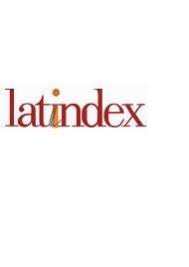Econometría aplicada y ética medioambiental
DOI:
https://doi.org/10.54571/ajee.675Palabras clave:
Ética medioambiental, Consumo energético, RETINA, Green AI, Eco-RETINAResumen
En el presente trabajo se explora la relación entre la ética medioambiental y la econometría aplicada, poniendo el foco en el consumo energético del ajuste de los modelos econométricos. Como ejemplo de práctica deseable, se ha implementado en Python el algoritmo RETINA siguiendo un enfoque de Green AI. Se han eliminado cuellos de botella que tenía el algoritmo original y añadido la posibilidad de medir las emisiones de CO2 del entrenamiento del algoritmo. Además, se han añadido nuevas funcionalidades que no poseía el procedimiento original. Se ha llamado a esta nueva versión Eco-RETINA.
Descargas
Citas
Barbierato, E., & Gatti, A. (2024). Towards Green AI. A methodological survey of the scientific literature. IEEE Access. DOI: https://doi.org/10.1109/ACCESS.2024.3360705
Brennan, A., & Lo, Y. (2016). Environmental Ethics Stanford Encyclopedia of Philosophy ed EN Zalta.
Castle, J. L., & Hendry, D. F. (2022). Econometrics for modelling climate change. En Oxford Research Encyclopedia of Economics and Finance. DOI: https://doi.org/10.1093/acrefore/9780190625979.013.675
Cochrane, A. (2006). Environmental ethics. Internet encyclopedia of philosophy.
Capilla Romerosa J. M. (2024). Página de GitHub. https://github.com/jcapilla780/Eco-RETINA
GeeksforGeeks. (2023). Environmental Ethics: Types, Importance, Examples. https://www.geeksforgeeks.org/environmental-ethics/
hrokr. (2023). The largest diamond dataset currently on Kaggle. https://www.kaggle.com/datasets/hrokrin/thelargest-diamond-dataset-currely-on-kaggle
Keeble, B. R. (1988). The Brundtland report:‘Our common future’. Medicine and war, 4(1), 17-25. DOI: https://doi.org/10.1080/07488008808408783
Marinucci, M. (2005). RETINA Winpack for real data: A quick guide for automatic model selection. Report, Universidad Complutense de Madrid.
Perez-Amaral, T., Gallo, G. M.,&White, H. (2003).A flexible tool for model building: the relevant transformation of the inputs network approach (RETINA). Oxford Bulletin of Economics and Statistics, 65, 821-838. DOI: https://doi.org/10.1046/j.0305-9049.2003.00096.x
Ranjan, C. (2020). Understanding deep learning: Application in rare event prediction. Imbalanced Learning; Connaissance Publishing: Atlanta, GA, USA, 19-27.
Schmidt,V., Goyal, K., Joshi, A., Feld, B., Conell, L., Laskaris,N., Blank, D.,Wilson, J., Friedler, S.,&Luccioni,
S. (2021). CodeCarbon: Estimate and Track Carbon Emissions from Machine Learning Computing. https://github.com/mlco2/codecarbon. https://doi.org/10.5281/zenodo.4658424
Schwartz, R., Dodge, J., Smith, N. A., & Etzioni, O. (2020). Green ai. Communications of the ACM, 63(12), 54-63. DOI: https://doi.org/10.1145/3381831
Varian, H. R. (2014). Big data: New tricks for econometrics. Journal of economic perspectives, 28(2), 3-28. DOI: https://doi.org/10.1257/jep.28.2.3
Descargas
Publicado
Cómo citar
Número
Sección
Licencia
Derechos de autor 2025 Javier Manuel Capilla Romerosa

Esta obra está bajo una licencia internacional Creative Commons Atribución-NoComercial-CompartirIgual 4.0.









